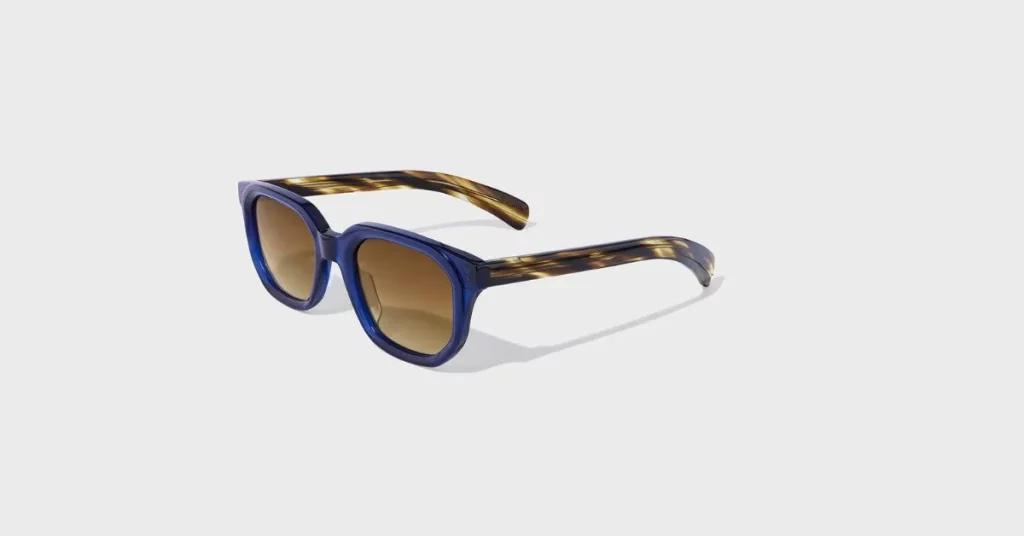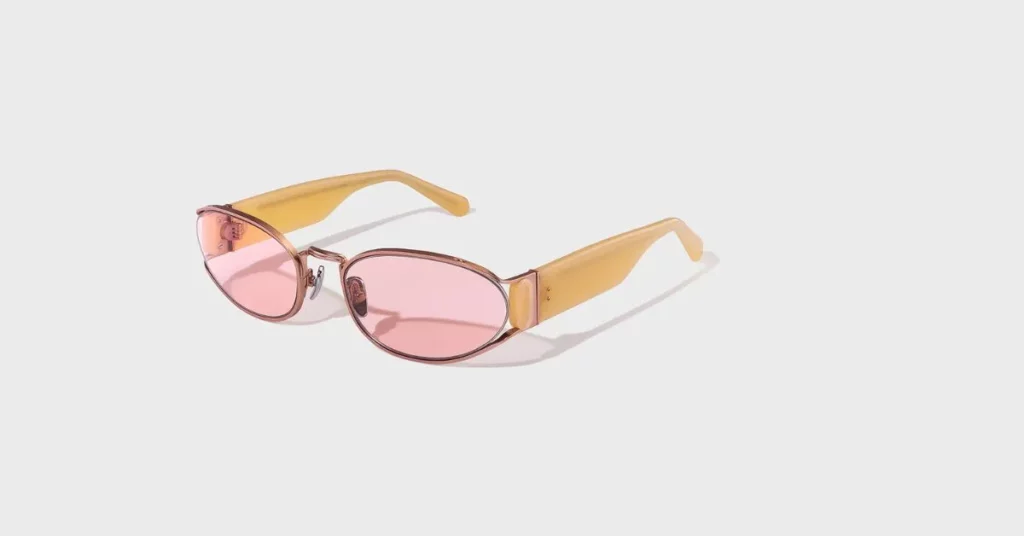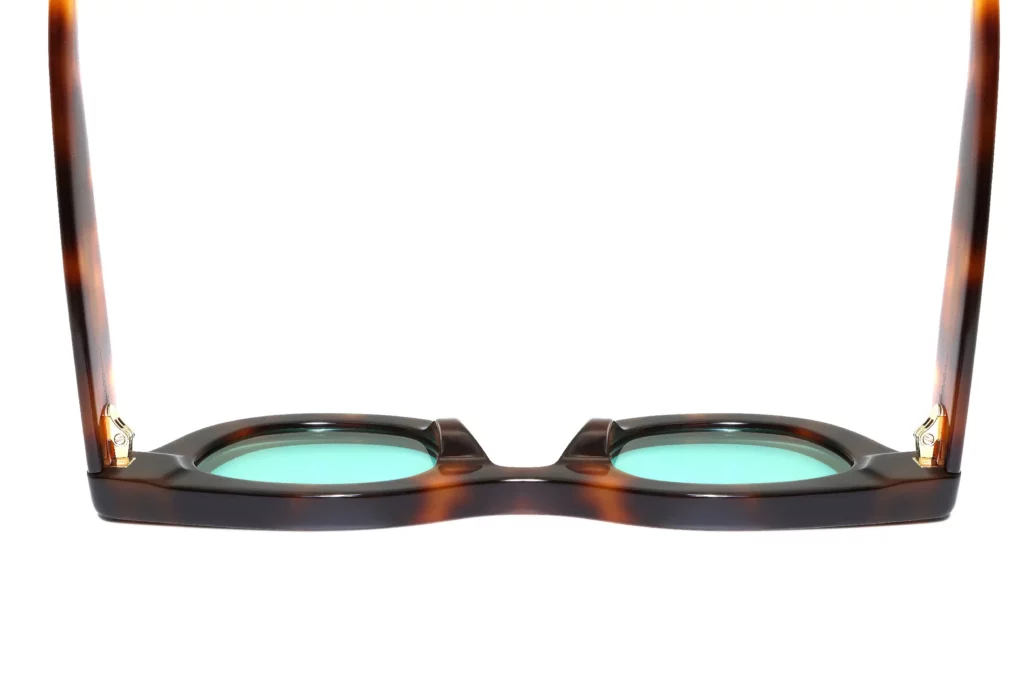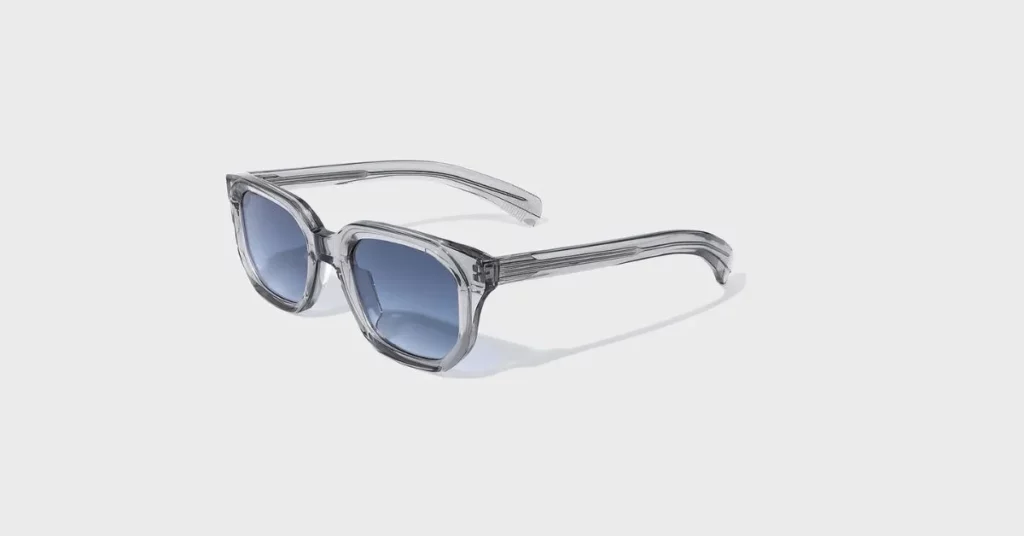For your eyewear brand, understanding “handmade” acetate manufacturing moves beyond marketing jargon. It becomes a precise business differentiator that directly affects your product’s market position, pricing power, and brand authenticity. Your sourcing decisions require a framework that separates genuine craftsmanship from the misleading claims flooding the market.
Handmade acetate frames combine premium cellulose acetate with specialized manufacturing that favors human craftsmanship over mass automation. Authentic handmade production involves manual cutting from acetate blocks, multi-stage hand polishing, precise hinge insertion, and individual quality control—a world away from high-speed injection molding or automated tumbling processes.

The Strategic Foundation: From Buzzword to Brand Advantage
The “handmade” label on acetate frames exists across a spectrum of manufacturing methods. Each approach has distinct costs, quality profiles, and opportunities for your brand. Your supplier selection depends on understanding these variations to match your target market’s expectations. The landscape offers three main production models, and your evaluation must distinguish between them to align your product with your brand promise.
Decoding the “Handmade” Spectrum: A Framework for B2B Decision-Making
To make an informed choice for your brand, you must understand the core differences between the primary manufacturing models. Each offers a trade-off between artisanal quality, precision, and cost.
| Feature | Fully-Handmade | Hand-Finished | Artisan-Assisted |
| Primary Shaping | Manually cut & shaped from acetate blocks | Precision CNC-machined fronts & temples | CAD-optimized designs, CNC-machined |
| Polishing Method | Multi-stage manual hand-polishing | Manual polishing after machine shaping | Human oversight on final polishing stages |
| Key Advantage | Unmatched artisanal feel, subtle uniqueness | High precision, consistency, complex designs | Efficient development, optimized production |
| Cost Impact | Highest (40-60% > machine-assisted) | Moderate | Most cost-effective of the premium tiers |
| Best For | Luxury/artisan brands seeking authenticity | Premium brands needing scalability & precision | Brands wanting premium features with efficiency |
Pro Tips: When assessing a “fully-handmade” process, request samples from different production batches. You should see minor, authentic variations in surface texture and edge profiles that signal genuine manual craftsmanship, not the uniformity of a machine.
Key Metric: Premium hand-polished frames achieve a surface roughness below 0.2 micrometers. Tumble-polished alternatives typically only reach 0.8-1.2 micrometers, a noticeable difference in lustre. In my two decades crafting handmade eyewear, I’ve consistently observed that this superior finish is one of the clearest indicators of true premium quality.
Identifying Red Flags: Vague Marketing vs. Transparent Process
Reliable suppliers offer detailed process documentation, time-stamped production photos, and measurable quality specifications instead of vague marketing. A supplier’s inability to specify the percentage of hand-work, a reluctance to allow facility visits, or hazy descriptions of quality control are major red flags.
Critical Warning: Suppliers claiming “handmade” without providing specific process details or quality metrics are likely using primarily automated systems with very little manual involvement. Authentic producers keep detailed records, including quality checkpoint documents and traceability linking a frame to the specific craftspeople who worked on it.

Evaluating the Core Material: Why Premium Cellulose Acetate is a Strategic Asset
The quality of your frames starts with the acetate itself. Your supplier’s sourcing decisions directly influence the durability, comfort, and aesthetic of your final product, justifying its premium price and supporting your brand’s reputation.
The Impact of Material Sourcing on Quality and Brand Story
Material provenance creates measurable differences in frame performance and provides authentic storytelling opportunities for your brand. Sourcing from established, heritage suppliers offers quality consistency and brand association benefits that support higher retail prices.
- Plant-Based Origins: Cellulose acetate comes from renewable cotton linters and wood pulp. This plant-based composition provides superior material properties compared to petroleum-based plastics and offers a compelling eco-conscious narrative. The material is created by treating natural cellulose with acetic acid, resulting in a biocompatible and inherently hypoallergenic product.
Example: Brands that leverage documented renewable material sourcing can often command a 15-25% price premium over competitors using conventional plastics.
- The Provenance Factor: Heritage houses like Mazzucchelli in Italy (since 1849) or Takiron in Japan represent the gold standard. Their proprietary manufacturing creates unique color depth, pattern complexity, and surface characteristics that are impossible to replicate with standard suppliers. Mazzucchelli’s BeCycle program, for instance, incorporates 40% certified recycled content while maintaining virgin material performance.
Key Metric: While Mazzucchelli acetate sheets can command a 200-300% price premium over standard options, they enable you to position your product 40-60% above competitors due to proven quality and brand association.

Translating Material Properties into Tangible Consumer Benefits
Superior acetate offers measurable performance advantages that directly lead to consumer satisfaction and a stronger brand.
- The Hypoallergenic Advantage: Its plant-based nature makes premium acetate naturally hypoallergenic, eliminating skin irritation issues that can affect up to 12% of eyewear users and expanding your potential market.
- A Superior, Customizable Fit: Acetate’s thermoplasticity allows for heat-based adjustments by an optician for a perfect, custom fit without harming the frame’s structural integrity. This enhances comfort and reduces returns.
- Premium Weight with Durability: High-quality acetate feels substantial yet light, typically weighing 20-30% less than equivalent metal frames. Its inherent flexibility provides superior impact resistance, reducing breakage and lowering warranty costs.
Leveraging Aesthetics for a Defensible Market Position
The visual characteristics of premium acetate create clear competitive advantages that justify the investment in higher-quality manufacturing.
- Unique Embedded Colors and Patterns: High-quality acetate production allows for complex color layering and embedded patterns. Mazzucchelli’s techniques, for example, create a depth and richness that serve as a powerful brand differentiator.
- Superior Lustre and Transparency: Premium acetate formulations are optimized for exceptional clarity and depth of shine. When hand-polished, these surfaces reflect light with an intensity that lower-grade alternatives simply cannot match.

The B2B Vetting Blueprint: How to Audit and Select Your Manufacturing Partner
Your choice of manufacturer determines your product quality and business success. A systematic evaluation framework helps you find partners who can deliver authentic handmade quality while meeting your commercial needs for consistency, scale, and compliance.
A Framework for Evaluating Production Capabilities
A thorough supplier evaluation requires you to go beyond promises. You need on-site verification, documentation review, and capability testing to validate claims and align production with your quality standards.
The On-Site Audit: A Checklist for Verifying “Handmade” Claims
A physical facility inspection gives you critical insights into a supplier’s real capabilities. Your audit should focus on the specific stages where manual craftsmanship is essential.
- Inspect Acetate Curing, Cutting, and Preparation: Your audit should start with raw material handling. Verify that acetate blocks are cured at a controlled temperature (typically 60°C for one week) to prevent warping. Observe the cutting process to distinguish between manual and CNC methods, noting material utilization rates.
- Observe Core Wire Pressing and Hinge Insertion: Temple assembly reveals the level of skill involved. Watch how core wires are inserted, as this requires precise temperature and positioning for durability. Evaluate hinge installation for precision, consistency, and functional testing of the opening and closing action.
- Scrutinize Polishing and Finishing Stages: This stage truly separates premium frames. Evaluate the polishing equipment, the skill of the operators, and the QC processes that ensure a consistent, lustrous surface. The finishing process should include individual frame inspection for surface consistency and dimensional accuracy.

Best Practice: During an audit, request production samples from different time periods. Variations in critical dimensions exceeding ±0.1mm suggest poor process control.
Key Metric: A quality hinge installation should withstand a 500+ cycle durability test without any loosening, with the opening force remaining between 0.8-1.2 Newtons.
Assessing Technical Skill and Component Quality
Long-term product reliability depends on the quality of every component and the skill of assembly.
- Evaluate Sourced Components (Hinges, Rivets, Core Wires): Your frame’s durability is tied to its components. Examine supplier documentation for hinge manufacturers and material certifications for all metal parts.
Critical Warning: Suppliers using unbranded or uncertified components often see 3-5 times higher warranty claim rates compared to those using certified parts from established makers.
- Analyze Prototyping and Customization Capabilities: Your ability to innovate depends on your partner’s design capabilities. Evaluate their CAD systems, rapid prototyping equipment (like 3D printing), and design modification process.
- Request and Scrutinize Production Samples: Sample analysis reveals a supplier’s true quality control. Request samples from multiple batches to evaluate consistency in color, dimensions, and surface finish. Examine them under magnification to spot any micro-level imperfections.

De-Risking Your Investment: Compliance, Quality Control, and Testing
Regulatory compliance and quality verification are not just about paperwork; they protect your business from liability, ensure market access, and build customer trust.
Auditing Internal Quality Control (QC) and Verifying Standards
Don’t just accept a certificate at face value. True compliance requires ongoing effort.
- Review Internal QC Documentation: A supplier’s commitment to quality is evident in their internal systems. Examine their quality manuals, inspection procedures, and statistical process control data.
Example: Suppliers with strong QC systems typically maintain defect rates below 2% and can show you documented corrective actions and process improvements.
- Validate the Application of ISO, CE, and FDA Standards: Compliance is an ongoing process. Verify that the supplier conducts regular internal audits, maintains equipment calibration, and keeps procedures updated with current standards.
Mandating Third-Party Lab Testing for Key Performance Indicators
Independent testing provides objective quality assurance for critical performance metrics.
- Test for Material Stability and Colorfastness: This testing ensures frames maintain their shape and appearance over time. It includes tests for UV exposure, temperature cycling, and resistance to perspiration to prevent fading or discoloration.
- Analyze Hinge Durability and Frame Integrity: Hinge lifecycle testing (500+ cycles) identifies potential failures. Structural tests, including drop tests and deformation analysis, ensure frames can withstand normal use.
- Ensure Skin Contact Safety: Nickel release testing is mandatory to prevent allergic reactions and comply with safety regulations in many markets. Biocompatibility tests are also needed to validate any hypoallergenic claims.

From Partnership to Product Launch: Building a Resilient Supply Chain
A strategic partnership requires aligning your business goals with your manufacturer’s capabilities to ensure sustainable growth.
Choosing the Right Partnership Model for Your Business Goals
Your partnership structure determines your level of control, customization, and cost.
| Partnership Model | Level of Customization | Typical MOQ | Best For |
| OEM (Original Equipment Manufacturer) | Full control over design, materials, and quality | Higher (300-1200 pcs) | Brands seeking complete differentiation |
| Private Label | Limited to existing designs with your branding | Lower (12-50 pcs) | Fast market entry or volume-focused strategies |
| Co-Creation | Collaborative development of new, proprietary designs | Varies based on project | Brands seeking to innovate with a manufacturing expert |
Balancing Artisanal Production with Commercial Scalability
As your brand grows, your manufacturing partner must be able to scale with you without sacrificing quality.
- Match Price Point to Craftsmanship: Be realistic about costs. Fully handmade processes add 40-60% to production costs but can enable 15-25% higher retail prices. Hand-finished methods offer a balance of premium quality and commercial viability.
- Factor Artisanal Processes into Timelines: Handmade production has longer lead times, typically 25-45 days. This includes material curing (7 days), production (15-20 days), and QC/finishing (3-7 days). Minimum order quantities (MOQs) for handmade frames usually start around 300-500 pieces.

Integrating Advanced Features to Future-Proof Your Product Line
Work with a partner who can grow with your vision, whether it involves simple personalization or complex technology.
- Assess Capability for Custom Engraving and Personalization: Personalization through custom laser engraving, color matching, or unique sizing can set your brand apart. This requires a partner with flexible production systems.
- Plan for Prescription Lens and Smart Technology Integration: The future of eyewear is evolving. Assess a potential supplier’s capability for precision lens mounting and electronic component integration to ensure you can adapt to new market demands.
Establishing a Framework for Long-Term Success
Protect your investment and brand with clear agreements and proactive planning.
- Secure Your Brand with IP Protection and Quality Agreements: Before sharing any designs, implement comprehensive agreements that cover design ownership, usage restrictions, and non-compete clauses.
Best Practice: Register your designs in key markets before starting production and document your development process to support any IP claims.
- Establish Objective Quality Benchmarks in Contracts: Your supplier contracts must include measurable specifications for things like dimensional tolerances, surface quality, and functional performance. Regular audits ensure these standards are met.
- Ensure Consistency and Navigate Supply Chain Disruptions: Work with your partner to implement statistical process controls and batch tracking to maintain consistency. Proactive planning, such as diversifying material sources, is key to managing geopolitical risks and other potential disruptions.

Conclusion
Defining “handmade” for your acetate frames creates a sustainable advantage by connecting an authentic process to your brand’s position. Success depends on rigorous supplier vetting, clear quality benchmarks, and partnerships with manufacturers who offer verifiable expertise. This systematic approach allows you to position your brand with confidence, ensuring your products deliver the premium experience that builds lasting loyalty. Partner with Kssmi to access transparent manufacturing, proven quality systems, and genuine handmade production that brings your vision to life.
Frequently Asked Questions
1. How do I differentiate between “hand-finished” and “handmade” processes?
Request detailed process documentation that specifies time allocated to manual versus automated tasks. Ask for production timeline breakdowns that show hand-work duration and the quality control checks used to verify manual craftsmanship.
2. How do curing time and acetate type impact final product quality?
Proper curing at 60°C for one week prevents shrinkage and improves stability. Premium cotton-based cellulose offers superior flexibility and hypoallergenic properties over wood pulp alternatives. Sourcing from heritage suppliers like Mazzucchelli significantly increases material cost but justifies higher retail prices through proven quality.
3. What specific lab test reports are critical to request from a supplier?
Beyond a CE or FDA certificate, ask for hinge durability reports (verifying 500+ cycles), nickel release test results for skin safety, and UV stability reports for colorfastness. Also request material composition analysis to verify acetate purity and biocompatibility reports to support any hypoallergenic claims.
4. What are the trade-offs between hand-polishing and barrel-tumbling?
Hand-polishing adds to the unit cost and production time but achieves a far superior surface lustre with a roughness below 0.2 micrometers. This manual process creates an unmatched depth of shine, eliminates the micro-scratches common in tumbling, and justifies a premium market position.
5. How can my brand best protect the IP of a new frame design?
Use a comprehensive manufacturing agreement with clauses for design ownership, usage restrictions, non-compete provisions, and confidentiality. Register your designs in key markets, maintain detailed development records, and establish clear ownership rights before you begin co-development.


